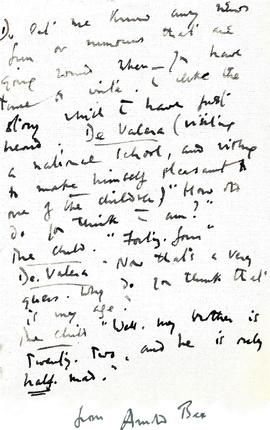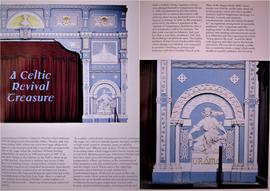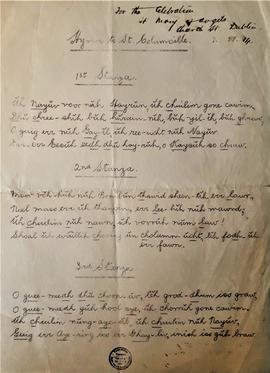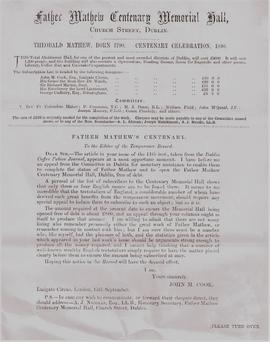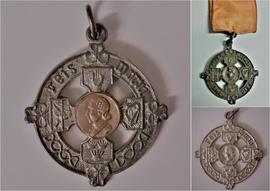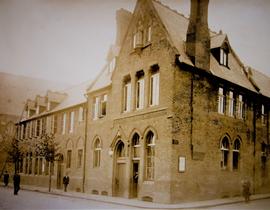- IE CA HA/2/2/2
- File
- c.3 June 1929-23 Sept. 1946
Part of Irish Capuchin Archives
Letters from Arnold Bax (1883-1953), 155 Fellows Road, London, and Grosvenor Hotel, Chester, to Fr. Michael O’Shea OFM Cap., President, Father Mathew Hall, Cork. In 1929 the Feis Maitiú Corcaigh invited Bax, a well-known composer and poet, to become an adjudicator marking the beginning of a 24-year friendship with the prestigious local music festival. Most of the correspondence relates to arrangements for the Cork Feis and other matters of musical interest. The file includes fifteen original items in Bax’s hand. With contemporary manuscript and later typescript copies of Bax’s letters. The file also includes a typescript appreciation of Arnold Bax possibly written by Fr. O’Shea. It reads ‘The way he [Bax] came to Cork was simple enough. I attribute his coming to the initiative of Frau Fleischmann in the meeting of the Feis Maitiú Committee that was considering adjudicators for the year 1929. I remember at the time that it was mentioned that Bax had rather a Celtic strain in his compositions and the he would like to come’. Also includes a newspaper cutting of a letter from Bax to the 'Daily Telegraph' referring to a performance by a choir at the Catholic Cathedral in Cork. In Irish and English.

